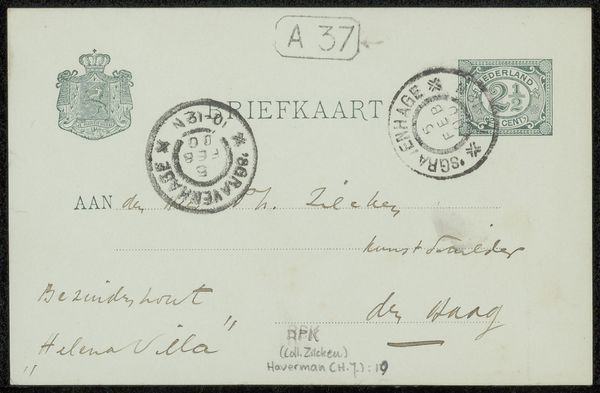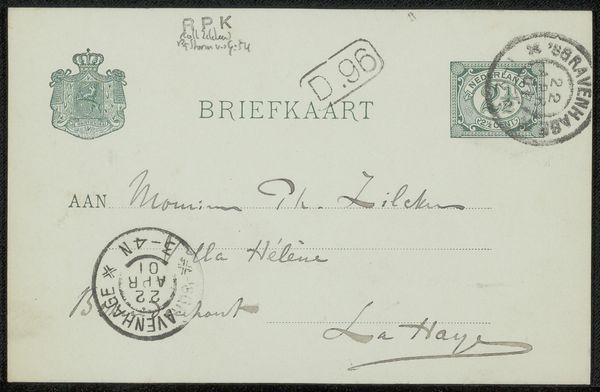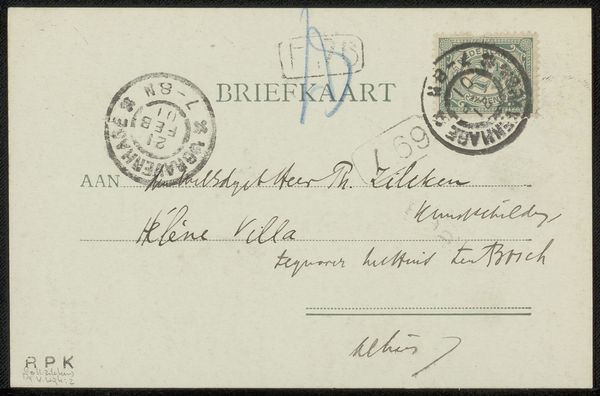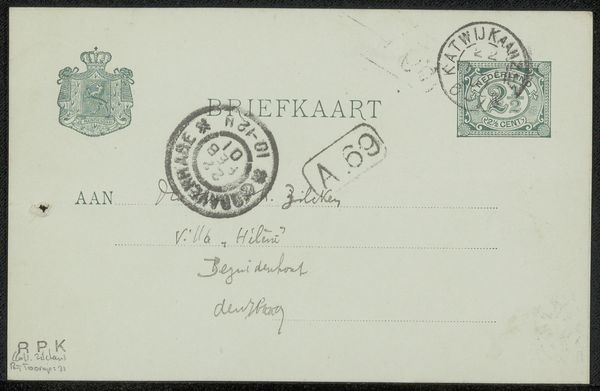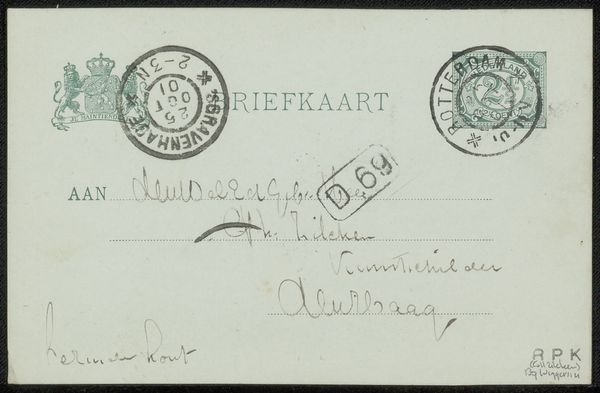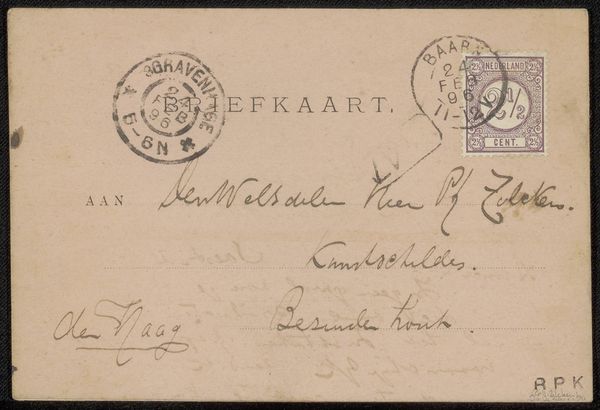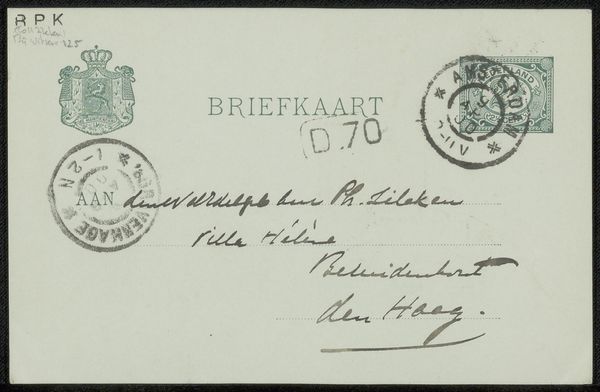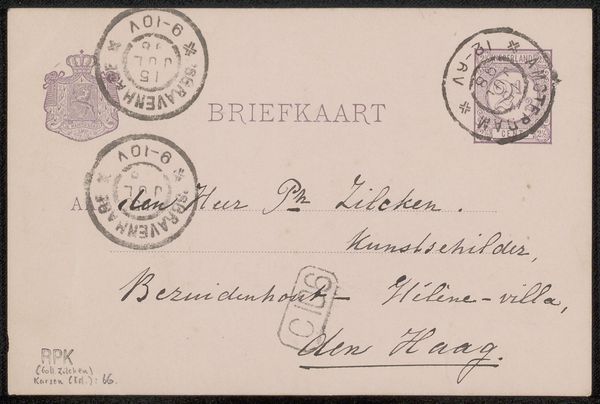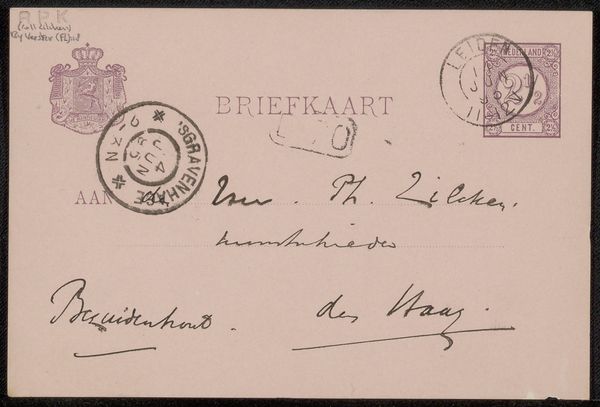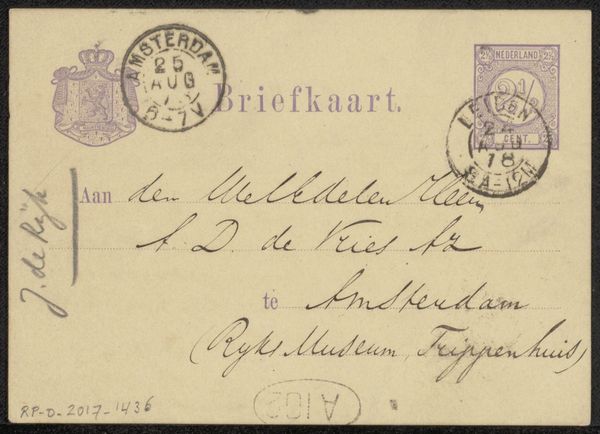
Copyright: Rijks Museum: Open Domain
Curator: Today, we are examining "Briefkaart aan Philip Zilcken" by Jan Toorop, which predates 1911. It’s a work rendered in ink on paper, currently held in the Rijksmuseum. My immediate reaction is how unassuming it appears – a humble glimpse into a past communication, really. Editor: It feels more than unassuming; there’s a ghostliness to it, almost an ethereal quality despite the mundane nature of a postcard. It whispers of forgotten intimacies and bygone days. What is the relationship, what secrets does this Zilcken hold? Curator: Let's look at the form. Notice how Toorop employs an art nouveau sensibility in this simple note, from the stylized ink stamps to the organically inspired, swooping handwriting. The drawing serves as both a functional message and an aesthetic object. Editor: Yes, and even the postal markings become part of the narrative. These are not merely logistical necessities, but trace elements of a communication system shaped by societal conventions and the limitations of its time. Imagine, the sender penning the note in careful script in an era of horse drawn delivery routes, the hand stamp documenting it. It speaks of labour. Curator: Precisely, those dark ink stamps break the flat pale surface of the card to produce visual depth. And the artist exploits line and form in handwriting to direct your eye around the plane. This creates visual balance by framing the more personal note below, drawing our eye around and down. Editor: I see that – how the address penned on the card itself and even the barely legible signature scrawled over it seem to act as a counterpoint. Who were Zilcken, Toorop? Both of them highly influential art critics whose legacies helped pave the way for future Dutch masters, that’s something a mere formal analysis ignores. Curator: Context enriches meaning but doesn’t diminish the power of the artistic choice itself, of how we perceive that layering through compositional choices. Editor: Maybe not, but viewing this ‘postcard’ from both angles deepens appreciation, a beautiful interplay of history and technique, text and intention. I am glad for my insights into what could have otherwise been passed over. Curator: Indeed, I also believe considering both aspects reveals hidden qualities— the power of this small but fascinating artefact to evoke something much bigger, broader and historically informed.
Comments
No comments
Be the first to comment and join the conversation on the ultimate creative platform.
